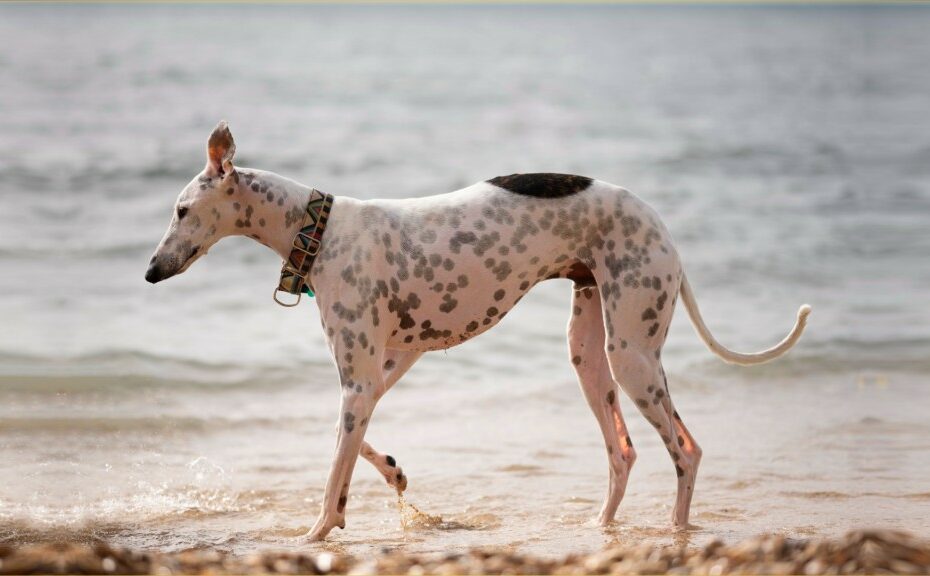Egyptian Dog Breeds and Their Royal Past – In the sands of ancient Egypt, where pharaohs ruled and gods walked among mortals, dogs held a place of unparalleled reverence. These loyal companions were more than just pets—they were symbols of devotion, guardians of the afterlife, and even conduits to the divine.
From tomb paintings depicting noble hounds by their master’s side to hieroglyphs celebrating their prowess in hunting and protection, dogs played an integral role in Egyptian civilization. They were revered for their loyalty, celebrated for their strength, and immortalized as sacred beings.
Today, we honor this storied legacy by exploring seven remarkable dog breeds with roots in Egypt—breeds that carry whispers of antiquity and embody the elegance, resilience, and spirit of their royal past.
1. Pharaoh Hound
The Pharaoh Hound is perhaps the most iconic breed tied to ancient Egypt, often depicted in hieroglyphs and statues alongside royalty. Believed to descend directly from the sleek hounds of the pharaohs, these dogs were prized for their speed, agility, and keen senses.
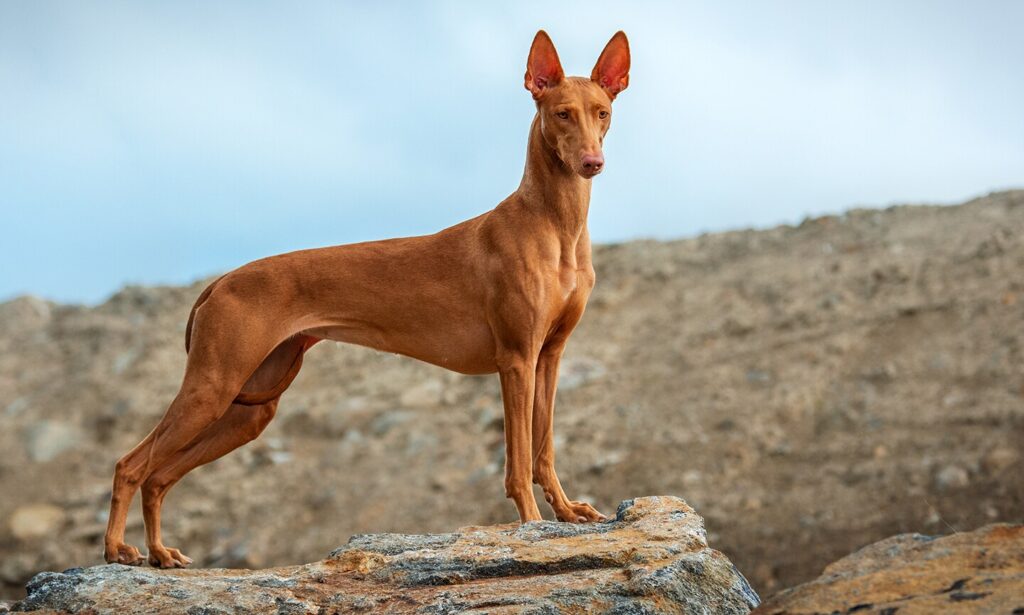

Historically used for hunting rabbits and gazelles, they were also seen as protectors of the home. With their lithe frames, amber eyes, and short tan coats, Pharaoh Hounds exude grace and athleticism.
Also Read: 15 Most Popular Dog Breeds in America Right Now
Their temperament is gentle yet alert, making them excellent family companions who are equally at ease lounging indoors or sprinting across open fields. Modern-day owners appreciate their intelligence and adaptability, though their high energy requires ample exercise.
For those seeking a regal companion steeped in history, the Pharaoh Hound remains unmatched.
2. Basenji
Known as the “barkless dog,” the Basenji is one of the oldest breeds on Earth, with origins tracing back over 5,000 years to ancient Nubia and Egypt. Often referred to as the “dog of the pharaohs,” Basenjis were valued for their ability to hunt silently, using scent and sight rather than sound.
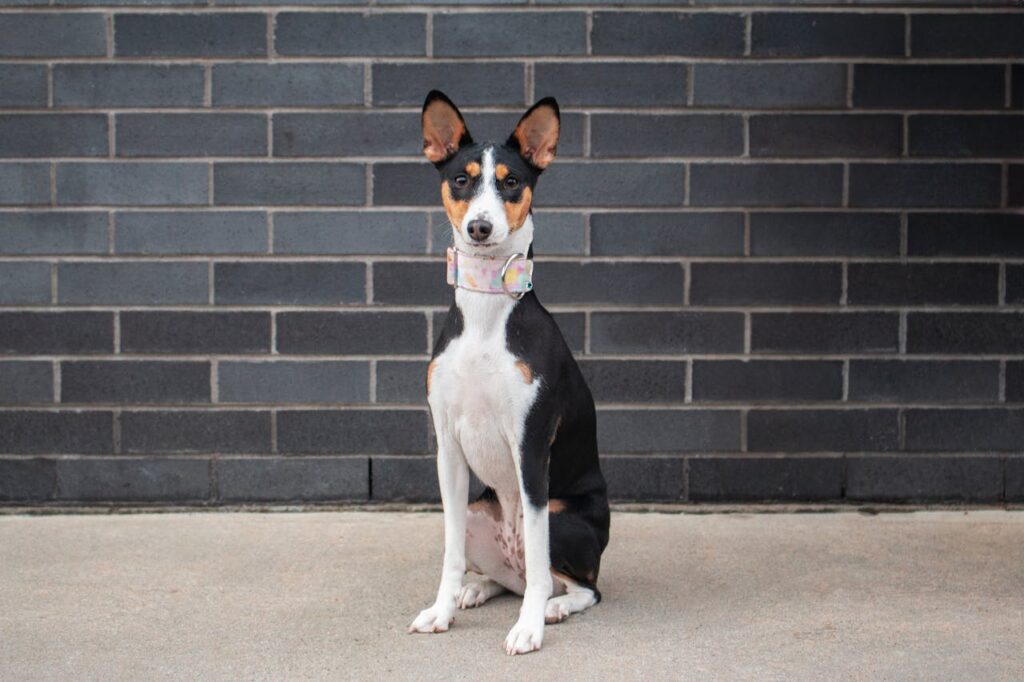

Tomb paintings depict these elegant dogs accompanying hunters through lush marshlands. Compact and muscular, Basenjis boast smooth coats, curled tails, and expressive almond-shaped eyes. Despite their quiet demeanor, they are incredibly intelligent and independent, traits that reflect their self-sufficient ancestry.
While modern-day Basenjis can be aloof with strangers, they form deep bonds with their families. Their playful nature and grooming ease make them ideal for active households willing to embrace their spirited personalities.
3. Saluki
The Saluki, often called the “Royal Dog of Egypt,” was a favorite among pharaohs and nobility, cherished for its beauty, speed, and grace. Revered as a symbol of purity and divinity, Salukis were mummified alongside their masters and buried in tombs adorned with jewels.
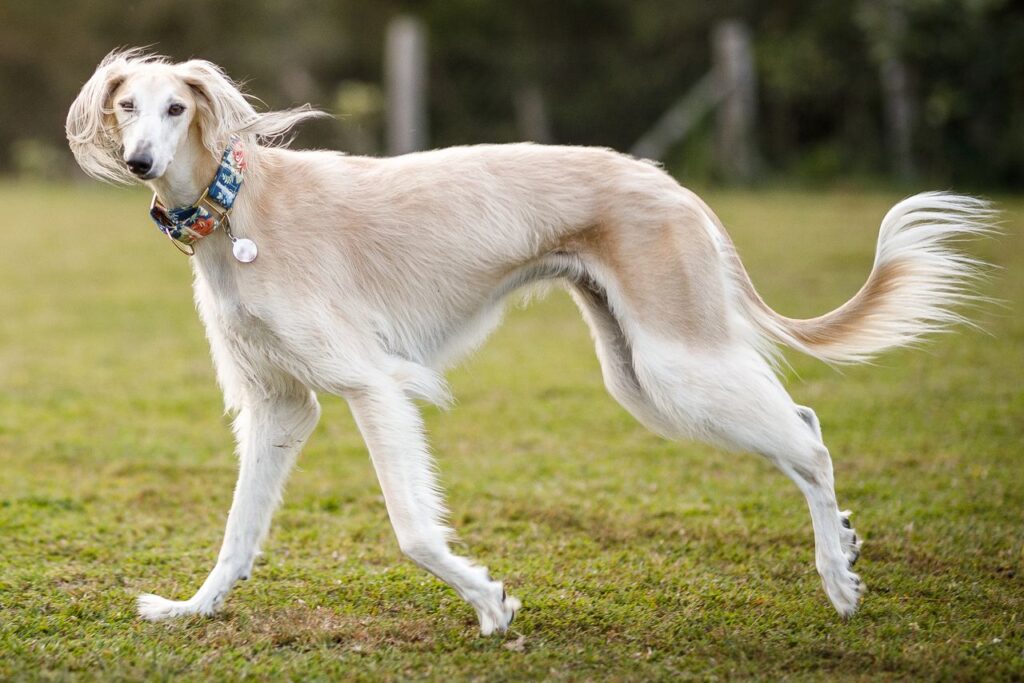

This sighthound’s slender build, silky coat, and feathered ears evoke images of desert winds and moonlit chases. Historically bred for coursing game like gazelles and hares, Salukis possess incredible endurance and speed.
Also Read: Loving Mastiff Breeds That Are Strong & Gentle Giants
In modern times, their calm and affectionate nature makes them wonderful indoor companions, though their need for regular exercise cannot be overlooked. For those drawn to refinement and elegance, the Saluki offers both timeless charm and undeniable athleticism.
4. Ibizan Hound
Though originally thought to originate from Ibiza, recent studies suggest the Ibizan Hound may trace its lineage back to ancient Egypt, where similar dogs appear in art and artifacts. Known for their striking resemblance to Anubis, the jackal-headed god of the afterlife, these hounds were likely revered for their spiritual significance.


Tall and lean, with large erect ears and amber eyes, Ibizan Hounds cut a majestic figure. Agile and quick, they excel at activities requiring bursts of speed and precision. Despite their athletic prowess, they are surprisingly gentle and affectionate at home, forming strong bonds with their human pack.
Owners must provide ample mental and physical stimulation to keep these energetic hounds content. For those enchanted by their otherworldly aura, the Ibizant Hound is a living link to ancient mysticism.
5. Egyptian Armant
The Egyptian Armant, sometimes called the “working dog of Egypt,” has a long history as a herding and guard dog in rural communities along the Nile. Though less glamorous than their royal counterparts, Armants earned respect for their versatility and steadfast loyalty.


Medium-sized with a wiry coat and expressive face, they resemble a mix between a terrier and a shepherd. Hardy and resilient, Armants thrive in challenging environments and remain vigilant protectors of their families.
Also Read: German vs American Rottweiler – Which One’s Right for You?
Their friendly disposition and eagerness to please make them excellent companions for first-time dog owners. While not widely recognized outside Egypt, this humble yet hardworking breed deserves recognition for its enduring contributions to agricultural life.
6. Baladi Street Dog
While not a formal breed, the Baladi Street Dog represents the heart and soul of Egypt’s canine population today. Descended from indigenous pariah dogs that roamed the region thousands of years ago, Baladis are resourceful survivors adapted to urban and rural settings alike.


Lean and agile, with short coats ranging from tan to brindle, these dogs embody simplicity and resilience. Though often misunderstood due to their street-dwelling status, many Baladis exhibit remarkable intelligence and loyalty when given care and training.
Adoption efforts in Egypt aim to give these underappreciated dogs a second chance, highlighting their potential as loving family pets. For those moved by compassion and cultural connection, adopting a Baladi can be a meaningful way to honor Egypt’s canine heritage.
7. Sloughi
Closely related to the Saluki, the Sloughi (pronounced “sloo-gee”) is another sighthound revered in ancient Egypt for its swiftness and elegance. Often depicted in carvings and murals, these dogs were favored by nomadic tribes and aristocrats alike.
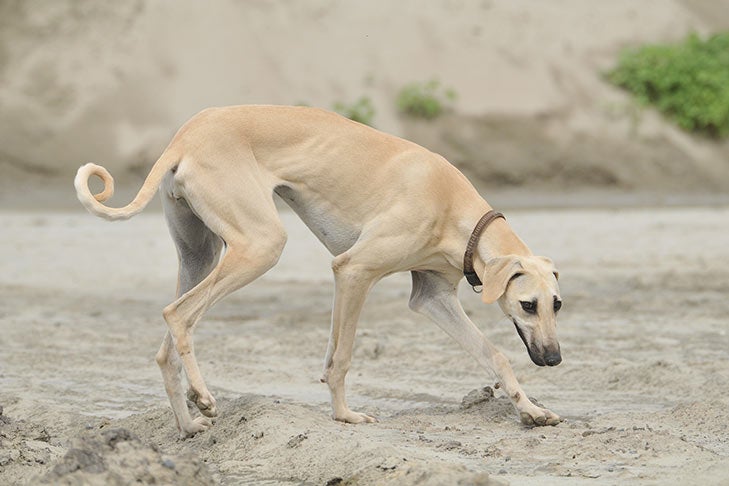

Svelte and sinewy, with smooth coats that shimmer in shades of sand, fawn, or brindle, Sloughis embody understated sophistication. Their dignified presence belies a playful and affectionate nature, particularly with trusted humans.
Also Read: 12 Cat-Friendly Dog Breeds Perfect for Pet Harmony
Like other sighthounds, Sloughis require plenty of space to run but are otherwise calm and composed indoors. For those captivated by their enigmatic allure, the Sloughi offers a blend of ancient mystique and modern-day charm.
Honoring the Legacy of Egypt’s Noble Dogs
From the sun-drenched deserts of antiquity to the bustling streets of modern Cairo, Egypt’s dogs have stood as steadfast companions, protectors, and symbols of enduring loyalty. Each of these seven breeds carries echoes of a bygone era—a testament to the profound bond between humans and animals that transcends time and culture.
Whether you’re drawn to the regal elegance of the Pharaoh Hound, the silent wisdom of the Basenji, or the rugged resilience of the Baladi, there’s a piece of Egypt’s rich history waiting to become part of your life.
